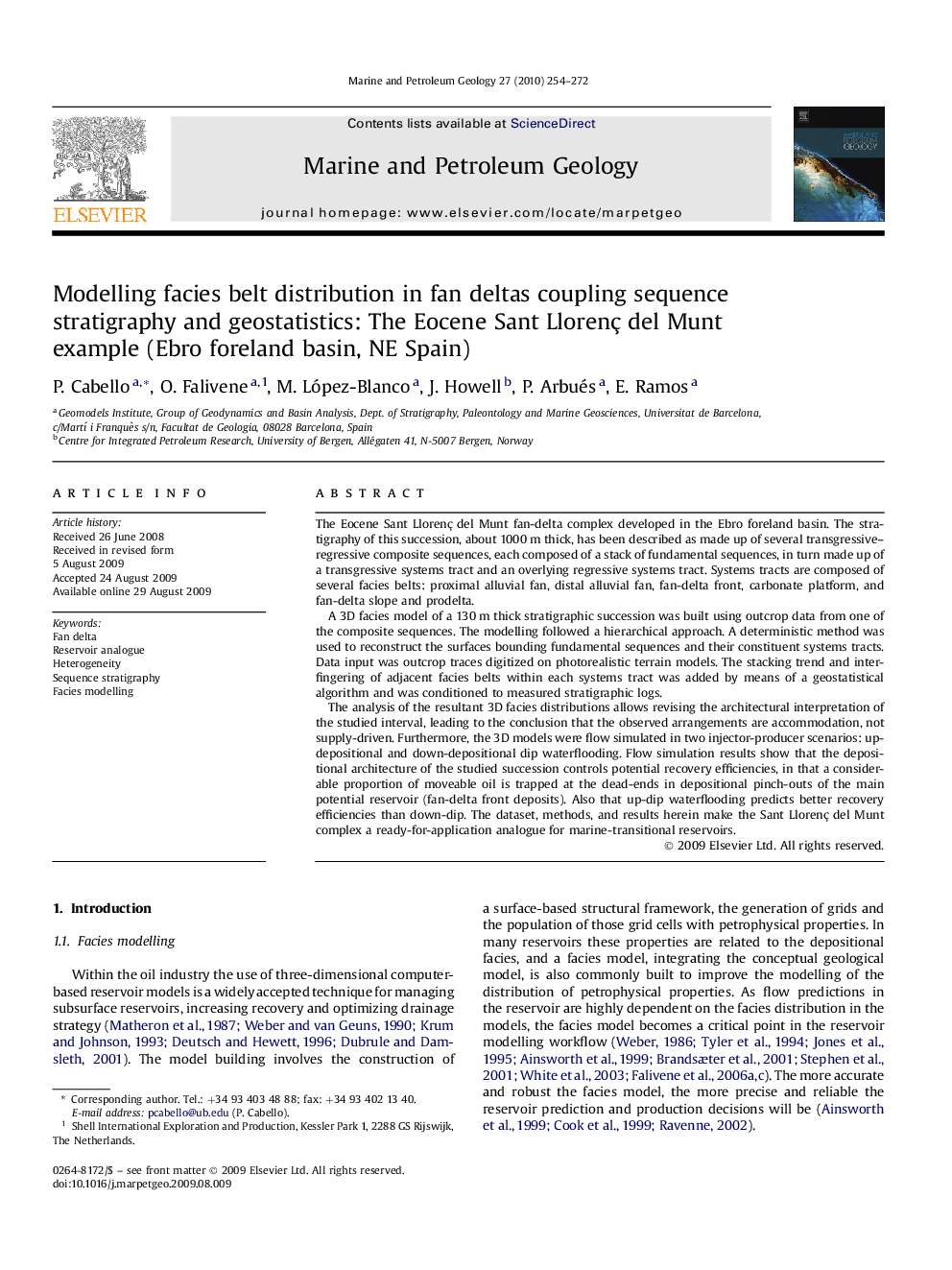| کد مقاله | کد نشریه | سال انتشار | مقاله انگلیسی | نسخه تمام متن |
|---|---|---|---|---|
| 4696253 | 1351663 | 2010 | 19 صفحه PDF | دانلود رایگان |

The Eocene Sant Llorenç del Munt fan-delta complex developed in the Ebro foreland basin. The stratigraphy of this succession, about 1000 m thick, has been described as made up of several transgressive–regressive composite sequences, each composed of a stack of fundamental sequences, in turn made up of a transgressive systems tract and an overlying regressive systems tract. Systems tracts are composed of several facies belts: proximal alluvial fan, distal alluvial fan, fan-delta front, carbonate platform, and fan-delta slope and prodelta.A 3D facies model of a 130 m thick stratigraphic succession was built using outcrop data from one of the composite sequences. The modelling followed a hierarchical approach. A deterministic method was used to reconstruct the surfaces bounding fundamental sequences and their constituent systems tracts. Data input was outcrop traces digitized on photorealistic terrain models. The stacking trend and interfingering of adjacent facies belts within each systems tract was added by means of a geostatistical algorithm and was conditioned to measured stratigraphic logs.The analysis of the resultant 3D facies distributions allows revising the architectural interpretation of the studied interval, leading to the conclusion that the observed arrangements are accommodation, not supply-driven. Furthermore, the 3D models were flow simulated in two injector-producer scenarios: up-depositional and down-depositional dip waterflooding. Flow simulation results show that the depositional architecture of the studied succession controls potential recovery efficiencies, in that a considerable proportion of moveable oil is trapped at the dead-ends in depositional pinch-outs of the main potential reservoir (fan-delta front deposits). Also that up-dip waterflooding predicts better recovery efficiencies than down-dip. The dataset, methods, and results herein make the Sant Llorenç del Munt complex a ready-for-application analogue for marine-transitional reservoirs.
Journal: Marine and Petroleum Geology - Volume 27, Issue 1, January 2010, Pages 254–272